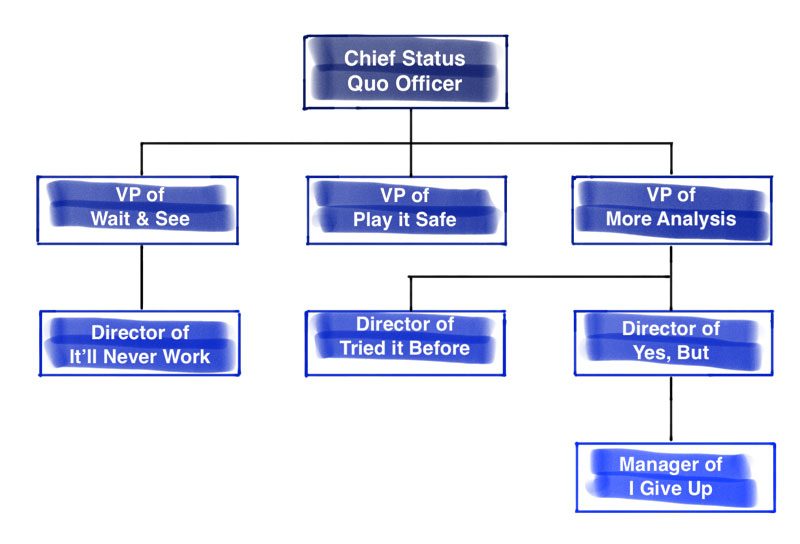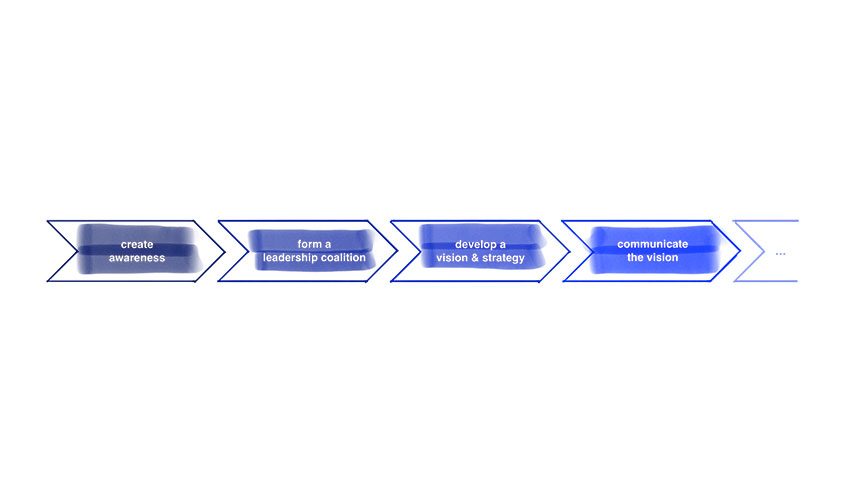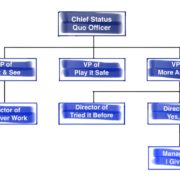Successfully implementing change – Part 1

It was Christine’s dream job: project manager for a big digitalization project in an established, thriving medium-sized company. She had the opportunity to make full use of her experience, the job was well-paid while she had attractive working conditions, the company offered career advancement opportunities beyond this project and by accepting the position she had made a great career move.
But after only a few weeks she became disillusioned with her new job. No matter who Christine talked to within the executive or management board, everybody supported the digitalization project – but as soon as there was talk about necessary changes to be made, she met with resistance from all sides. “This won’t work”, „It’s too risky“, „Let’s wait and see …“, “Yes, but …” – those were the usual reactions.
The power of the status quo
Cases like Christine’s, in which she met resistance to change is nothing new. As long as you only talk about goals to be achieved, it will be relatively easy to find approval. However, once you start listing the changes required to reach these goals, you’ll suddenly be confronted with a wave of doubts and rejection.
By the way, what is it that makes the status quo so much more attractive compared to change? One reason is sheer force of habit. Humankind gets used to things and processes in less than no time. Once committed to memory, operations are carried out automatically, hence requiring less attention and concentration. To change a routine habit, you need a great deal of energy as you have to focus on the new way of handling things plus put a lot of energy into resisting well-established processes.
Another obstructive force against change is fear. With the status quo, people have the feeling that they know the processes, the way things are connected and their consequences and they tend to think they can control all these things. When you tread new paths, this alleged security is gone because the take-off into the unknown undoubtedly has its risks.
There are many more factors, such as “one’s personal experience” or “personal pride”. The list could be endless; but it all boils down to one truth: To bring about real change, you need to overcome the attraction of established customs.
How change can be successfully put into practice
Seeing this, it is hardly surprising that about three quarters of all change initiatives in companies are doomed to failure. At the same time, at least every fourth initiative is successful. The good news is that chances of success are significantly higher if several aspects are taken into account when it comes to preparing the implementation of change. In the first part of our mini series “Successfully implementing change” we start with taking a closer look at the preparation process necessary for a change initiative to go as planned.
Creating awareness
“We’ve always done it like that.” is often seen as one of the most dangerous statements – and at least in terms of change this is only too true. If efforts to bring about change are to be successful, the mindset behind this declaration has to be overcome.
To do so, all involved persons have to made aware that the changes in question are not only important but absolutely necessary to ensure the success or even the survival of the respective company. Unless it is clear to everybody that carrying on is no alternative; no-one will accept the necessity for change.
Forming a coalition of leadership
While this is being done, you should draw up a competent leadership team. When assembling these change agents you should consider the following aspects:
- The team should have sufficient power and authority to put the intended changes into practice.
- The change agents should play a key role within the existing organization and ideally be representative of it.
- Each change agent should be completely committed to the cause.
It is especially the last point that is vital for successfully implementing change: Those who doubt that change makes sense or will prove advantageous, have no business to be part of the change agent team.
A useful tool to identify suitables candidates for this squad is the stakeholder matrix. A good point of departure is the dimension “interest” as it shows how strongly a person supports the change about to be reached. The dimension “power” must in no way be reduced to questions of rank and hierarchy but should describe how well someone is capable of encouraging others to participate in the process and of winning them over.
Developing a vision and a strategy
The first and foremost job of the change agents is to develop a vision for the change initiative. This vision depicts how the company will look like after the project has been completed: What will have changed, what will remain the same and why will this future situation be better than the present state of affairs? The vision serves as a compass for all activities connected with the project.
Once the goal has been defined, the team can begin to design a strategy that spells out how the organization can develop from the current situation to the company described in the vision. In a way, this guiding vision is like the book of rules for the change process and defines the most important steps on the way to realizing the vision.
Communicating the vision
Communicating this vision is the last key element in preparing change. Usually, staff members are keen on participating in improvement processes of their company. However, this can only be effective if you know where it is that your organization is going.
Here good timing is essential. Without a general awareness that change is strictly necessary, it will be difficult to earn wholehearted approval for the developed vision. Some people will utterly refuse the idea that things have to be changed at all.
If, on the other hand, those in charge one-sidedly emphasize that change is necessary without drawing a clear picture of where the relevant changes are leading, this will cause enormous internal upheaval and make it difficult for people to have trust in the management team, severely hampering the change initiative’s progress.
If a company follows all four pieces of advice when planning to introduce a change initiative, it will be ready for successful implementation. Those aspects and factors that need to be considered to finally reach the set targets, will be the subject of the second part of our blog series.
Should you wish to lead your next project of change to successful completion and are seeking support, do contact us – for free and without any further obligations.





